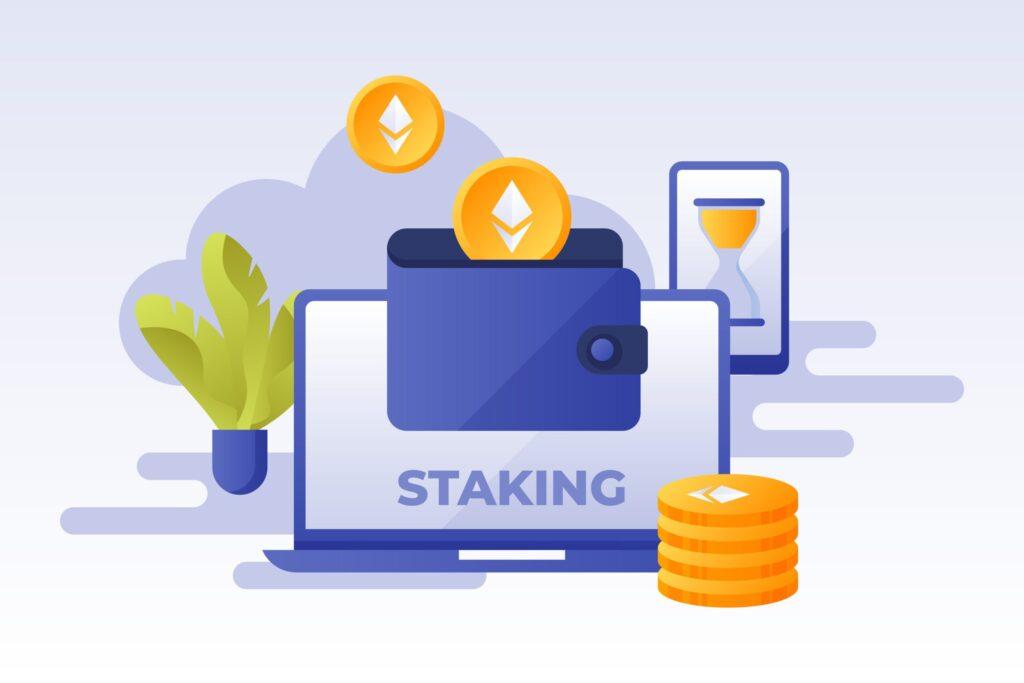How Staking Is Transforming Passive Income in Crypto?

In the ever-evolving world of cryptocurrency, new ways to earn passive income are reshaping how investors think about digital assets. While trading and HODLing were once the primary ways to benefit from the crypto market, staking has rapidly emerged as a preferred strategy for both newcomers and seasoned enthusiasts. As blockchains continue to innovate, staking rewards are becoming a compelling incentive for holding onto tokens and supporting network security at the same time.
Whether you’re safeguarding your coins with a top crypto wallet or exploring new DeFi platforms, staking offers a unique blend of profit potential and community contribution. By locking up your crypto to help validate transactions, you earn rewards sometimes significantly higher than traditional bank interest rates. This concept has transformed proof-of-stake (PoS) networks like Ethereum 2.0, Cardano, and Polkadot into attractive options for passive earners and ecosystem supporters alike.
What Exactly Is Crypto Staking?
At its core, staking means committing your crypto assets to support the operations of a blockchain network. Unlike Bitcoin’s energy-intensive proof-of-work (PoW) model, PoS blockchains rely on validators who stake their tokens to help confirm transactions and maintain network integrity.
By staking, you’re essentially putting your crypto to work. In return, you receive periodic payouts usually in the form of additional tokens. These rewards are similar to earning interest or dividends, but with the added benefit of strengthening the blockchain’s security and decentralization.
Why Staking Is Gaining Popularity in 2025?
Staking isn’t exactly new, but its adoption has skyrocketed recently, driven by several trends:
1. Ethereum’s Major Upgrade:
Ethereum’s long-awaited transition from PoW to PoS has made staking mainstream. With billions of dollars worth of ETH now locked in staking contracts, other blockchains are following suit, pushing staking into the spotlight.
2. Attractive Returns:
In a time when traditional savings accounts offer dismal interest rates, staking can provide annual percentage yields (APYs) ranging from 4% to 20% or even higher, depending on the network and tokenomics.
3. Eco-Friendly Consensus:
Staking aligns with the industry’s push toward greener technology. By replacing energy-hungry mining with token staking, networks dramatically reduce their carbon footprint.
4. User-Friendly Options:
More exchanges and wallets now offer staking-as-a-service, making it easy for even non-technical users to stake their coins without setting up complicated validator nodes.
Major Staking Coins to Watch
Not every coin can be staked, so it’s crucial to know which networks support it and what returns they offer. Here are some top contenders in 2024:
✅ Ethereum (ETH):
With the move to PoS complete, ETH staking is arguably the most high-profile example. Validators lock up 32 ETH to run a node, but many services offer pooled staking for smaller holders.
✅ Cardano (ADA):
Known for its strong community and research-driven development, Cardano offers consistent staking returns with easy delegation.
✅ Polkadot (DOT):
Polkadot’s innovative approach to interoperable blockchains includes attractive staking rewards and active governance participation.
✅ Solana (SOL):
Fast, scalable, and with a growing ecosystem, Solana allows users to delegate SOL tokens to validators to earn rewards.
✅ Tezos (XTZ):
One of the earliest PoS blockchains, Tezos lets holders “bake” their coins a fun twist on staking with steady payouts.
Risks and Considerations
As appealing as staking is, it’s not entirely risk-free. Before locking up your tokens, be aware of these key points:
⚠️ Lock-Up Periods:
Some networks have mandatory lock-up times. During this period, you can’t access your funds, which may limit your ability to react to market swings.
⚠️ Slashing:
In certain PoS systems, validators can lose a portion of staked tokens if they act dishonestly or fail to stay online. Delegating to reputable validators minimizes this risk.
⚠️ Market Volatility:
Staking rewards might be generous, but token prices can fluctuate dramatically. High APYs don’t guarantee profit if the underlying asset loses value.
⚠️ Custodial vs. Non-Custodial Staking:
Staking through exchanges is convenient, but comes with the risk of platform security. Many crypto enthusiasts prefer to stake directly or through decentralized pools to maintain control of their private keys.
How to Get Started with Staking?
If you’re ready to dip your toes into staking, here’s a quick roadmap:
Step 1: Pick Your Coin
Choose a network you trust and research its staking mechanics. Look at historical yields, network reliability, and validator performance.
Step 2: Select a Validator
For coins that use delegated staking, pick a reputable validator with a solid track record. Validators with consistent uptime and fair commission rates are ideal.
Step 3: Stake via Wallet or Exchange
Use your preferred wallet or a trusted exchange that supports staking. Follow the instructions to delegate or lock your tokens.
Step 4: Monitor and Reinvest
Track your rewards regularly. Some networks allow you to restake (compound) your earnings for even greater returns.
Future Trends: Liquid Staking and Beyond
One challenge with traditional staking is illiquidity — your funds are locked up. Enter liquid staking, a fast-growing innovation that lets you stake your coins while receiving a tradable derivative token in return. This means you can use your staked value in DeFi apps while still earning staking rewards.
Protocols like Lido and Rocket Pool are leading this space, and more networks are adopting liquid staking to attract capital. As this technology matures, expect staking to become even more flexible and integrated into broader DeFi ecosystems.
Final Thoughts
Staking has evolved from an obscure technical process into one of the crypto industry’s most user-friendly and rewarding opportunities. It combines the security benefits of network participation with the financial upside of passive income from crypto. Whether you’re an investor looking to beat inflation or a blockchain enthusiast eager to support your favorite network, staking is worth a serious look.
- Art
- Causes
- Crafts
- Dance
- Drinks
- Film
- Fitness
- Food
- Jogos
- Gardening
- Health
- Início
- Literature
- Music
- Networking
- Outro
- Party
- Religion
- Shopping
- Sports
- Theater
- Wellness



